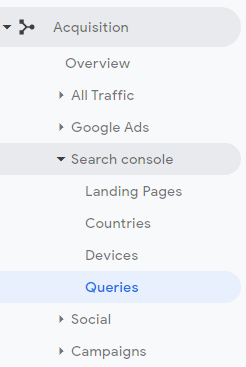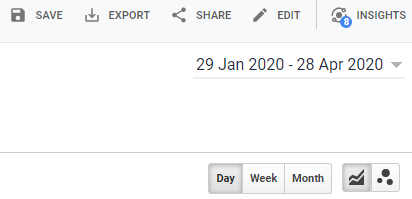Often, our clients just need a quick guide to get them up and running on Google Analytics. Not everybody wants to do amazing things with data and statistics, they just want to see how their site is performing for the basics and what they can tweak.
To that end, welcome to our Google Analytics for beginners guide.
I’ll jump straight in and presume you have a Google account and you have setup the analytics code on your site. For best results, use a PC or laptop as it gives you a much better and less crowded screen display than a tablet or mobile.
Logging in
First, you’ll need to login with your Google account. A quick shortcut for most people is to login to Gmail, it then activates the login for everything else… Analytics, Search Console, Ads, TagManager etc.. One thing that this helps with is to be able to read and acknowledge any emails you may get from Google as you change things, especially where Search Console is involved. More on that elsewhere on this site!
Now, follow this quick-start guide to get a speedy analytics overview:
Open Google Analytics
Close all other tabs except Gmail and open a new tab in your browser. Go here to start Analytics:
https://analytics.google.com
Setting the date range
First, look at the left side menu you’ll use this for most stuff.
Click on Acquisition > Search Console > Queries

Find the date ‘dropdown’ menu (top right). You can set this to any time period but I’d suggest initially to set it to the last 3 months to give you a good idea of average website traffic. You can later set this to any time period but I like 3 months as a good metric.

What you see to the right now are your search engine queries leading to clicks to the site.
Set the time period (top right) to the last 3 months to give you a good idea of average traffic. Note that Google Analytics runs about a day behind so you won’t see live results for today.
Now go to Acquisition > Google Ads > Search queries
These are your search engine queries that resulted in your Ads being shown and clicked.
Now go to Acquisition > Search Console > Network referrals
Those are your social network referrals and you can expand by clicking on the network, e.g. Facebook. This will show you the URL that was shared in the social media post.
Now go to Acquisition > Search Console > User flow
Those are the paths that your social network users took through your website.
Now go to Behaviour > Behaviour flow
This shows much the same as the social one above but starts with the landing page.
That’s enough for now, part 2 coming soon!